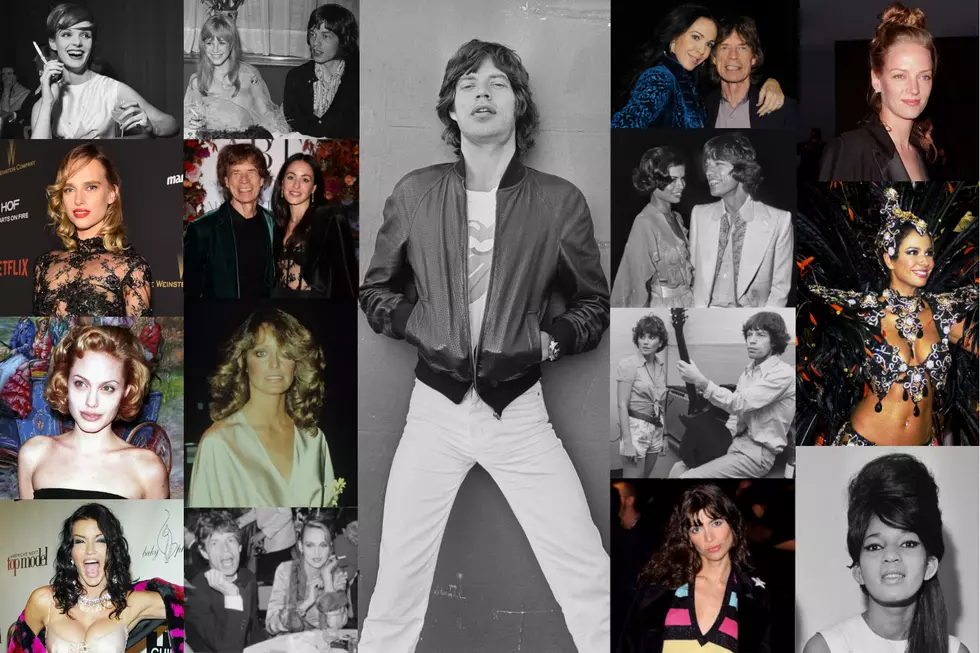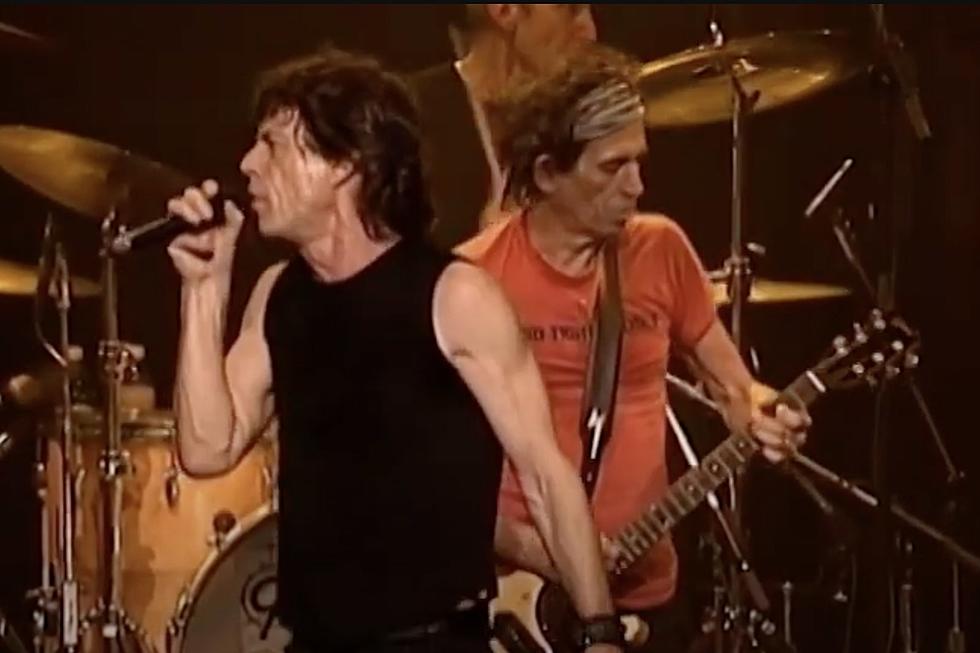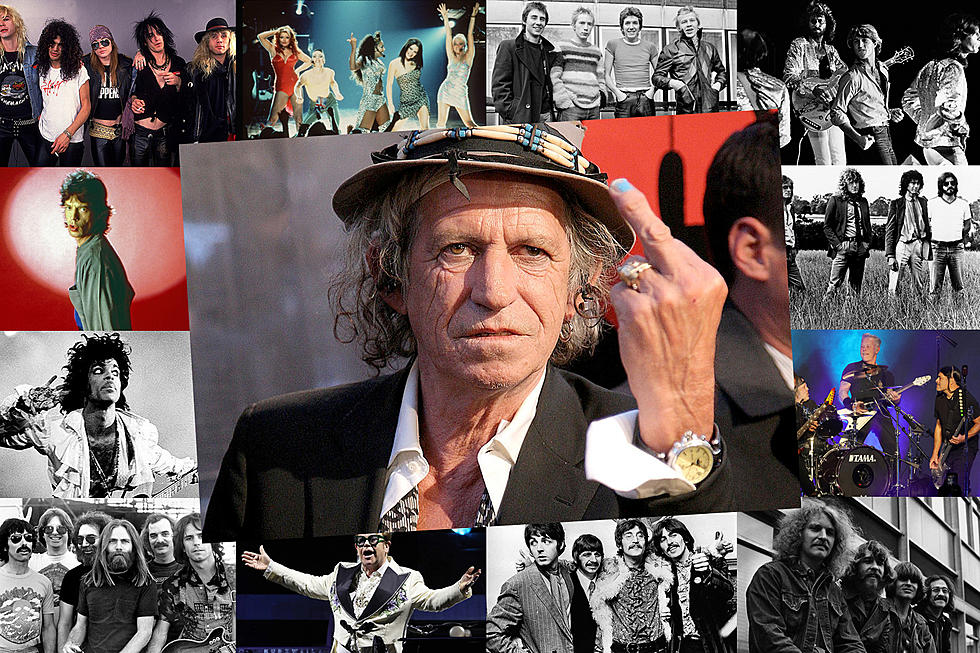
A Look Back at the Rolling Stones Mobile Studio: ‘A Watershed Moment in Recording Technology’
Did you know that the Rolling Stones' 'Sticky Fingers,' 'Led Zeppelin III' and 'IV' and Deep Purple's 'Machine Head' were all recorded at the same studio? And that studio, which was owned by the Stones, had wheels?
By 1968, top rock bands required months of studio experimentation and rehearsal to produce their latest LPs. To control costs and accommodate the Stones’ 24-hour lifestyle, the band’s pianist and road manager Ian Stewart suggested the Rolling Stones Mobile, or RSM, be built: a state-of-the-art recording studio mounted on a truck.
In 1970, the mobile studio was driven to Stargroves, Mick Jagger’s English country estate, to record much of the classic ‘Sticky Fingers.' Other bands that used the Mobile included Queen, Santana, Dire Straits, Fleetwood Mac, Bad Company and Iron Maiden. When the Mobile was almost destroyed in 1971, it became immortalized in the lyrics of a Deep Purple classic.
In December 1971, Deep Purple were in Montreux, Switzerland, to make what would become their bestselling album, ‘Machine Head.' “We decided to record the album onstage, using the natural acoustics of the surroundings,” bassist Roger Glover recounted in the book ‘Classic Rock Stories.’ “In other words, Make a studio album under live conditions, almost like a live album without the audience.”
“When the band decided to record their now legendary album ‘Machine Head,’ they wanted the best venue, the best team and the most modern recording equipment,” Dr. Drew Thomas, archivist for Deep Purple, told Canada’s National Music Centre. “The Rolling Stones Mobile was the band’s ‘weapon of choice.’ When we think about Montreux, ‘Machine Head’ and the band’s legacy, we can’t separate them from the Mobile – it was a critical component in the band’s recording process, and very integral to the legend of Deep Purple.”
The day before Deep Purple were to start recording, the Mobile was parked next to the Casino, an arena that was part of a complex of gambling halls, restaurants and theaters. While Frank Zappa and the Mothers of Invention were onstage, a fire was ignited when an audience member shot a flare into the ceiling. The Casino burned to the ground, but the RSM was moved in time to escape damage.
Deep Purple was inspired to write their best-known song, ‘Smoke on the Water,’ by the sight of the fire’s smoke that spread over Lake Geneva. The Mobile was first moved the Pavilion, a local theater where ‘Smoke on the Water’ was recorded, but when there were complaints about the volume, the RSM was taken to the Grand Hotel, where ‘Machine Head’ was completed.
The RSM was immortalized in ‘Smoke on the Water’'s lyrics: "We all came out to Montreux / On the Lake Geneva shoreline / To make records with a mobile / We didn't have much time ... / We ended up at the Grand Hotel / It was empty cold and bare / But with the Rolling truck Stones thing just outside / Making our music there."
“The mobile studio marks a watershed moment in recording technology,” Jesse Moffatt, the National Music Centre's manager of Collections and Artifact Care, tells Ultimate Classic Rock. “Until this time, artists were confined to using the traditional model of corporate recording studios, for example, working within standard 9-5 business hours.
“The creation of the RSM set a precedent for musicians to work outside the studio, and the idea that music could be recorded anywhere, at any time, without limitations, took hold. Moving forward into the 1970s, the RSM had a considerable impact on the development of music technology, and particularly in mobile recording.”
Built on the chassis of a BMC truck, the aluminum trailer was originally left unpainted. Rented for location work on the 1971 Zappa film ‘200 Motels,’ the unit was painted in camouflage to disguise it during shooting.
That year, the Stones decamped for France to avoid the astronomical tax rate imposed by the British government. The RSM was moved to Nellecote, a mansion in southern France rented by Keith Richards. Recording in the villa’s massive basement, the Stones produced another gem from their golden era: 1972's ‘Exile on Main St.’
“They also used the truck on a fair amount of live records as well as for overdubs on later records,” says Jason Tawkin, collections assistant at the Music Centre. “For example, they used the Mobile to record some of the vocals for the album ‘Some Girls.’”
“The RSM was built around a Helios console,” says Moffatt. “Past owners of Helios consoles included the Beatles, the Who, Eric Clapton, Steve Miller and Steve Winwood, to name a few. It was the console of choice by many, many musicians.
“Bands such as Led Zeppelin, Bob Marley, David Bowie, Lou Reed, Dire Straits, Fleetwood Mac, Frank Zappa and others used the RSM to make recordings. Arguably, some of the most important rock ‘n’ roll records of all time were made using this piece of technology.”
“It was the only independent mobile recording unit around,” Keith Richards wrote in his autobiography ‘Life.’ “We didn’t realize when we put it together how rare it was – soon we were renting it out to the BBC and ITV because they only had one apiece. It was another one of those beautiful, graceful, fortuitous things that happened to the Stones.”
Led Zeppelin used the RSM to record ‘Led Zeppelin III’ and ‘IV’ at Headley Grange, an English manor house.
“We needed the sort of facilities where we could have a cup of tea and wander round the garden and then go in and do what we had to do,” guitarist Jimmy Page said in ‘Led Zeppelin: A Celebration.’
“A recording studio is an immediate imposition as compared to sitting around a fire strumming,” added singer Robert Plant. “With Headley Grange we can put something down and hear the results immediately.”
“The Stones sold the truck to Bill Wyman in the mid-1980s,” says Tawkin. “Recording studios and the technology within them had changed a lot since 1968. SSL consoles with 48 or more channels had become the norm, and stripped down 1970s-style productions were out of fashion. The Stones had been the biggest band in the world for almost 25 years by then and they simply outgrew it.”
“The '80s seemed dominated by solo projects by the Stones,” Wyman recalled in his autobiography ‘Stone Alone.’ “When the band decided to give up collective ownership of our mobile studio, active since 1968, I took it over. I then launched AIMS – Ambition, Ideas, Motivation, Success – and together with sponsorship from Pernod we were able to give free recording facilities to 50 bands, out of 1,200 applicants in England. My purpose was to encourage young live bands in an age when producers were taking over.”
The AIMS project ended with a final concert at the Royal Albert Hall in 1988. The “Mighty Mobile,” as the Stones called it, was retired in 1993 after a final recording by Chris Jagger – Mick’s brother – and his band Atcha! “Around 1992 the truck was bought at auction by an American production company called Loho Studios,” says Tawkin. “It was shipped to New York. Loho made the RSM available for hire around New York City. Most notably it did a short residency at the famous punk bar CBGB’s. Here it recorded live shows from some of New York City’s most infamous hardcore bands such as the Ramones, Patti Smith and others.”
The RSM was acquired in 2001 by National Music Centre in Calgary. Moffatt says that electronics technician John Leimseider is conducting a very conservative restoration.
“We are preserving the RSM with the intent to keep it as original as possible," says Moffatt. "We recognize the importance of preserving its integrity. As a unique and irreplaceable piece of history – the first mobile recording truck – preserving the RSM, and its related technology, consoles and other recording equipment in perpetuity is fundamental to NMC’s collection policy, to ensure that it remains intact and in a place the public can enjoy it for generations to come.
“Once it is restored, the RSM will have its own dedicated exhibition space directly adjacent to NMC’s live music venue, the King Eddy, where the RSM will be exhibited to the public and used by artists to record new music. The RSM will be the first collection item moved into our new facility, mid-2015.”
A list of some of the albums recorded using the Rolling Stones Mobile:
Bad Company: ‘Run With the Pack’
Bad Company: ‘Straight Shooter’
Deep Purple: ‘Burn’
Deep Purple: ‘Machine Head’
Deep Purple: ‘Made in Europe’
Deep Purple: ‘Who Do We Think We Are’
Dire Straits: ‘Alchemy: Dire Straits Live’
Faces: ‘Long Player’
Fleetwood Mac: ‘Mystery to Me’
Gary Moore: ‘Over the Hills and Far Away’
Gary Moore: ‘Wild Frontier’
Iron Maiden: ‘Live After Death’
Iron Maiden: ‘No Prayer for the Dying’
Led Zeppelin: ‘Led Zeppelin III’
Led Zeppelin: Led Zeppelin IV’
Led Zeppelin: ‘Physical Graffiti’
Nazareth: ‘Rampant’
Queen: ‘Live Magic’
Lou Reed: ‘Live in Italy’
Rolling Stones: ‘Sticky Fingers’
Rolling Stones: ‘Exile on Main St.’
Rolling Stones: ’Some Girls’
Santana: 'Moonflower'
Ten Years After: ‘Recorded Live’
Ten Years After: ‘Rock & Roll Music to the World’
Frank Zappa: ‘200 Motels’
Frank Zappa: ‘Tinseltown Rebellion’
More From Ultimate Classic Rock









